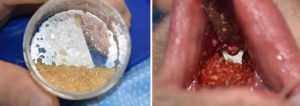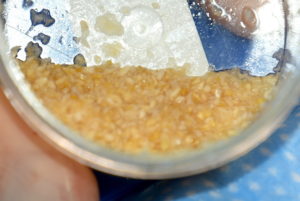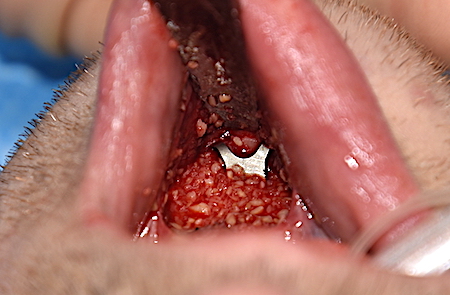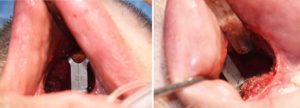Background: The well known sliding genioplasty can create multiple aesthetic dimensional changes of the chin. Most commonly horizontal advancements are done with or without some vertical height changes. While very effective at horizontal advancements it does result in an abnormal contour to the bone. (step-off) The larger the horizontal advancement the more significant this contour deformity becomes.
While this resultant chin contour deformity from a sliding genioplasty has been known for a long time, it is usually viewed as insignificant. While in small advancements this bony deformity may have little consequence that is certainly not a valid interpretation of it in larger advancements. The bony step-off really represents dead space which is ultimately filled with soft tissue collapse into it. This can lead to potential issues such as persistent postoperative chin tightness, abnormal mentalis muscle movements and lower lip tightness or retraction. While the deepening of the labiomental fold is typically viewed as an expected aesthetic sequelae it is an external indicator of this soft tissue collapse.
Filling in the bony step off to eliminate the dead space and recreate the more normal profile of the anterior surface of the chin makes sense as long as it does not create other problems. While bone grafts harvested from the patient is the best material for this task, few if any patients want a donor site for an aesthetic chin surgery. The next most logical choice is allogeneic or tissue bank bone which avoids a donor site and creates a lattice-like surface in the exposed marrow spaces of the cut chin edges.
Case Study: This male wanted an autogenous chin augmentation with significant horizontal advancement and some lesser vertical lengthening. By preoperative clinical measurements it was determined that 12mm of horizontal advancement and 4mms of vertical lengthening was needed for the desired aesthetic outcome.


Case Highlights:
1) A sliding genioplasty always leaves behind a bony defect and an unnatural profile shape, particularly in large advancements
2) Filling in the bony step-off and the osteotomy gap helps fill dead space and create a more natural contour.
3) Allogeneic chip bone grafting is the most logical choice in aesthetic chin surgery.
Dr. Barry Eppley
Indianapolis, Indiana




